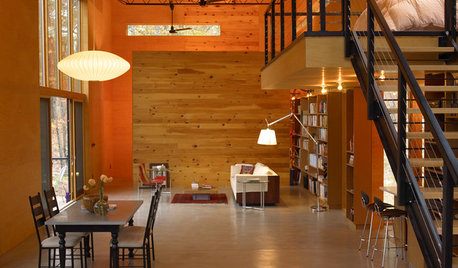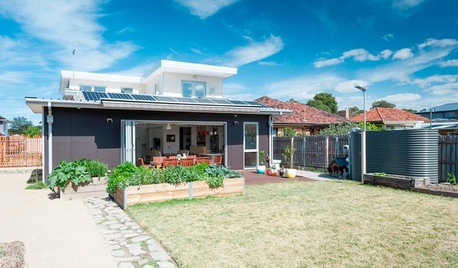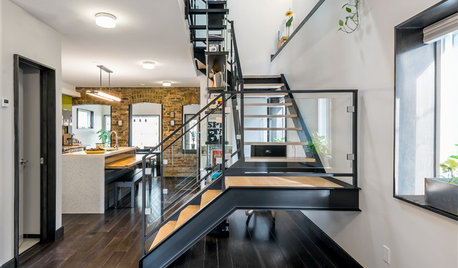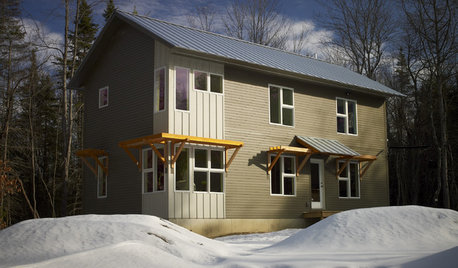Insulation cockloft (flat roof) - efficient + green possible?
dreamojean
11 years ago
Related Stories

ARCHITECTUREHouzz Tour: High Efficiency for a Modern Riverside Cabin
With an insulating green roof, savvy material use and a smart design, this home in the woods wastes not in a beautiful way
Full Story
REMODELING GUIDESCool Your House (and Costs) With the Right Insulation
Insulation offers one of the best paybacks on your investment in your house. Here are some types to discuss with your contractor
Full Story
GREEN BUILDINGInsulation Basics: Designing for Temperature Extremes in Any Season
Stay comfy during unpredictable weather — and prevent unexpected bills — by efficiently insulating and shading your home
Full Story
GREEN BUILDINGInsulation Basics: Heat, R-Value and the Building Envelope
Learn how heat moves through a home and the materials that can stop it, to make sure your insulation is as effective as you think
Full Story
GREEN BUILDINGEcofriendly Cool: Insulate With Wool, Cork, Old Denim and More
Learn about the pros and cons of healthier alternatives to fiberglass and foam, and when to consider an insulation switch
Full Story
GREEN BUILDINGHouzz Tour: An Energy-Efficient Home for 3 Generations
This Australian house takes sustainability and accessibility to a new level
Full Story
GREEN BUILDINGInsulation Basics: Natural and Recycled Materials
Consider sheep’s wool, denim, cork, cellulose and more for an ecofriendly insulation choice
Full Story
CONTEMPORARY HOMESHouzz Tour: Toasty Warm and Energy-Efficient in Utah Ski Country
An architect builds his own first home with passive house standards at the forefront
Full Story
MODERN HOMESMy Houzz: Modern Exposure and Energy Efficiency in Toronto
A Canadian architect transforms an outdated bungalow into a thoroughly modern family home
Full Story
HOUZZ TOURSHouzz Tour: Energy-Efficient, 'Lean' House in Maine
Sustainable architecture and amazing light draw an environmentally conscious family to a new home
Full Story






weedmeister
dreamojeanOriginal Author
Related Professionals
Lockhart Solar Energy Systems · Muscoy Solar Energy Systems · Carpinteria Solar Energy Systems · Freeport Solar Energy Systems · Madison Solar Energy Systems · Inver Grove Heights Solar Energy Systems · Beverly Hills Home Automation & Home Media · Garden Grove Home Automation & Home Media · Grand Rapids Home Automation & Home Media · Olathe Home Automation & Home Media · Park Ridge Home Automation & Home Media · Surprise Home Automation & Home Media · Temecula Home Automation & Home Media · Canton Fireplaces · Chelsea Fireplacesenergy_rater_la
dreamojeanOriginal Author
energy_rater_la